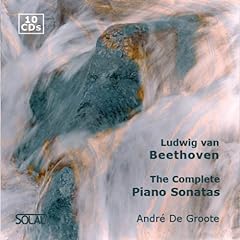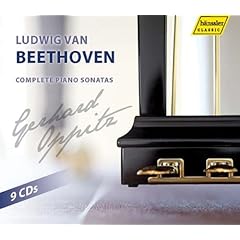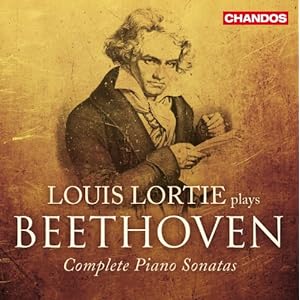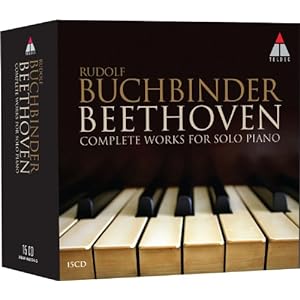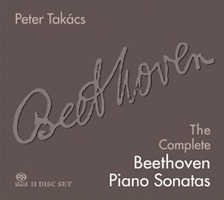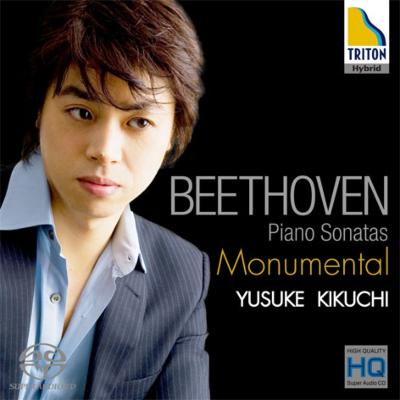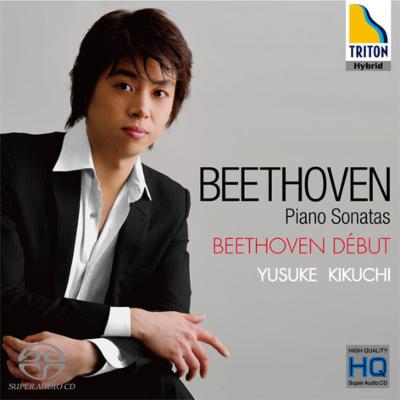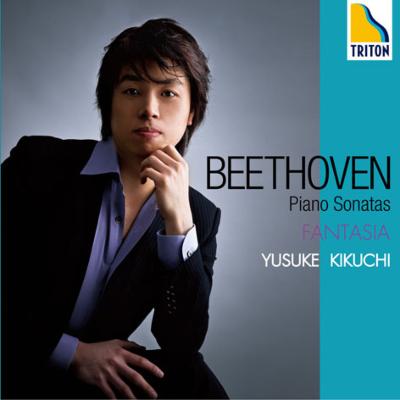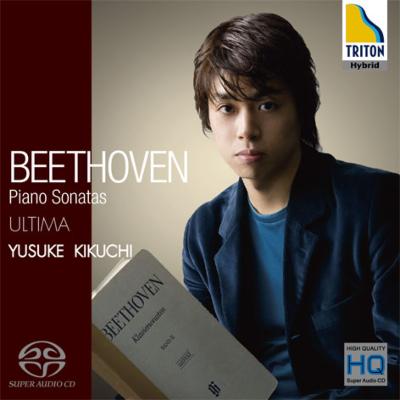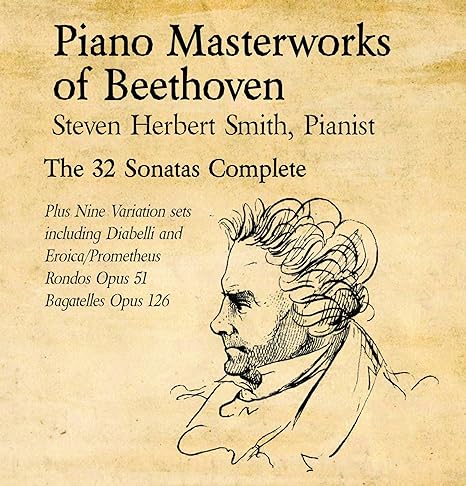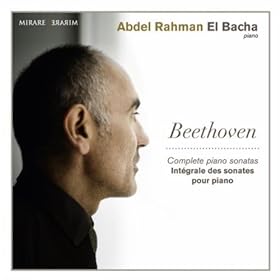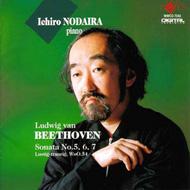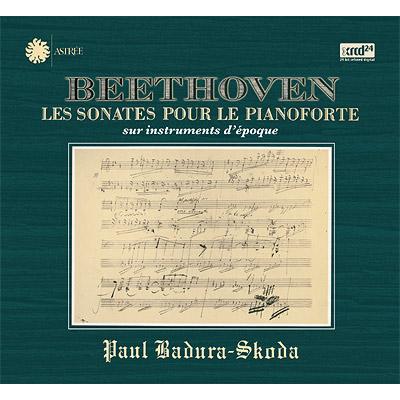Todd A
pfm Member
Adding to this thread: Beethoven Piano Sonata Cycle Journal.
I've continued on my lonely quest to hear all complete or nearly complete Beethoven piano sonata cycles that are available. At present, I have 86 complete cycles, and two nearly complete cycles (Gieseking and Gilels; I count the second Backhaus as complete). Anyway, here I'm posting on Irina Mejoueva's cycle. More cycles will follow. (I've not written on all the cycles, and there are some cycles that appear to be permanently gone, so I will never achieve my goal.)
----
(This is originally from 2010)
Irina Mejoueva is, as far as I can tell, the newest kid on the block to complete a cycle of Beethovens piano sonatas. The fifth and final volume was released only a few months ago in Japan on the mighty WAKA (Wakabayashi Koubou) label. Until I bought this set Id heard none of her playing, and read only one brief article about her where the most unusual fact revealed that she often relies on scores during recital, something that most pianists of course shun. Beyond that, I do know she has recorded quite a few discs of standard repertoire for WAKA, and thats shes a Russian living and working in Japan.
But hows her playing? Well, its a bit mixed. Instead of listening to the sonatas in numeric order, I decided to listen to them as they are presented on disc. The first volume, recorded way back in 2007 and 2008, includes a nice mix of works, as all the volumes do. It opens with the first two sonatas, and I must confess that I wasnt wowed. Mejoueva displays fine technique, sure, and she tends to favor swift-ish tempi, and shes most certainly very serious, but neither work is anything special theyre about average, if there is such a thing. The works kind of sound the same until WoO 54, which is excellent. That was intriguing. Then Op 90 came along to end the first volume, and it was the first standout performance. Tense, nervous, and relatively fast in the opener, it started to reveal a pianist with a point of view. Her independence of hands is quite fine, and though the sound is not top flight (more on that later), her clarity offers some interesting insights.
The next volume starts off much the same as the first did, with some nice but hardly exceptional playing, though parts of Op 2/3 display some superb playing. Op 13 ends the first disc of the volume, and its here that her approach becomes clearer. Mejoueva is about Sturm und Drang, albeit of using a more classical rather than romantic style; shes most at home in faster, more energetic, more aggressive pieces. The Pathetique is fast and somewhat aggressive at times, though Mejoueva never pushes things too far. Then comes Op 10/1 to start the second disc. WOW! I dont think Ive ever heard anyone launch the opening movement more quickly, and her control is absolute. She dashes through the work, infusing it with drive and energy matched by few. Truth to tell, I had downed a couple glasses of single malt prior to listening, so I had to return to the piece with my full wits about me to get a more accurate picture. Upon hearing it again, I thought, Wow! So a minor downgrade. This is one of the better versions out there. A couple more good works follow, but it is the closing Waldstein that again shows Mejoueva at her best. Speed, clarity, control, drive, and a few personal touches thrown in. This is no lightweight fare.
Now knowing what to expect for the rest of the set, I proceeded with a bit more enthusiasm. Volume 3 is given over mostly to energetic or intense works, and as such it is generally quite successful. Opp 22 and 26 are both quite good. The sonatas quasi una fantasia are both quite good, with some especially effective dynamic contrasts in the first sonata, and a vigorous ending movement in the second. Op 31/1 is well played if perhaps a bit too serious wheres the humor in the second movement? and the same can be said to some extent for Op 7. Op 54 is solid start to finish. I will say that one other trend started to become more apparent about now. Mejouevas slow movements sometimes sound a bit cold and detached to these ears. They are well played, yes, but she delivers more in the faster movements. In other words, shes not much for sentimentality and pretty sounds.
The fourth volume continues along the same trend, with a good Op 10/3, especially in the faster movements. The Pastorale is more forceful than may be ideal for some, but thats not always a bad thing. The Tempest is forceful and intense where needed, though a bit desolate in the slow movement. The relative weakness in Mejouevas style shows up in her playing of the late sonatas, with Opp 106 and 111 the first instances. Her playing remains rooted more in middle period Beethoven, and as such she never really attains that transcendent sound that the best players achieve. That written, she has her moments, and in the predictable places. Truth to tell, the Hammerklavier fares well from her approach, with a large, quasi-orchestral sound in the opening movements, a nicely cold slow movement, and a truly zippy concluding fugue; Mejoueva plays the entire with amazing speed and dexterity, truly something exhilarating to listen to. Really, its the slow movement of Op 111 where things are sub-par, though the tense Arietta and somewhat fierce boogie-woogie variation offer some interesting listening. The chains of trills, well, other do those better.
The final twofer offers the remainder, starting with a slightly too severe Op 14/2. Nothing surprising. Op 31/3 is not as fun as I like, with an almost aggressive mien throughout, though the nearly growling bass is a nice touch. (How much of that is her playing and how much is the recording I do not know.) Then comes what strikes me as the apex of her set Op 57. This is an intense, hefty, large-scale, swift-ish take on the work, and one defined by intensity. And more of that delicious growling bass! No, shes not quite to Annie Fischers level of intensity, but shes close. The final disc is given over to Opp 101, 109, and 110, and once again they sound more like middle period Beethoven than late period Beethoven. Overall, that means theyre not top notch, but thats not to say there arent good portions. The fugue in 101, the fast movements in 109 and 110, the repeated chords in 110 all sound quite compelling but interesting parts do not make outstanding wholes.
As I wrote before, the set is something of a mixed bag. Ms Mejoueva certainly has chops, theres no doubt of that, but she also plays the New Testament in a stylistically limited fashion. Gulda managed to deliver one of the best sets available doing something similar, but thats Gulda. Also of note is the fact that as presented on these discs, Mejoueva is not in any way a colorist. While never monochrome, she just never seems interested in presenting beautiful Beethoven. She seeks truth elsewhere. Her dynamic range is hard to assess because of the recordings, but it seems wide enough to do the works justice. Yes, she plays the works well, even if I cannot say that she ascends to the top tier of players, and possibly not even the second tier. Others may disagree, of course, and the five star reviews on HMV Japans site indicates that (though almost every recording will have someone give it a top rating). Overall, I had a good time listening, and will do so again.
The only real complaint has to do with the sound. The recordings are 24 bit (yawn), but they are hardly state of the art. The perspective is a bit distant for the first four volumes, but the usual benefit of a broader dynamic range never materializes she does not come across as another Gilels or Sherman, for instance. The first four volumes to a noticeable degree, and the fifth to a lesser degree, also display opacity in the middle registers. Perhaps thats the piano, the hall, the pianist, the microphone placement, or all of those factors and more, but it means that theres less detail than the best recordings made today have to offer. The flip side of that coin is that in the big, bold passages of works like Opp 53 or 57 sound somewhat bigger than they may its a near wash of sound.
I've continued on my lonely quest to hear all complete or nearly complete Beethoven piano sonata cycles that are available. At present, I have 86 complete cycles, and two nearly complete cycles (Gieseking and Gilels; I count the second Backhaus as complete). Anyway, here I'm posting on Irina Mejoueva's cycle. More cycles will follow. (I've not written on all the cycles, and there are some cycles that appear to be permanently gone, so I will never achieve my goal.)
----
(This is originally from 2010)
Irina Mejoueva is, as far as I can tell, the newest kid on the block to complete a cycle of Beethovens piano sonatas. The fifth and final volume was released only a few months ago in Japan on the mighty WAKA (Wakabayashi Koubou) label. Until I bought this set Id heard none of her playing, and read only one brief article about her where the most unusual fact revealed that she often relies on scores during recital, something that most pianists of course shun. Beyond that, I do know she has recorded quite a few discs of standard repertoire for WAKA, and thats shes a Russian living and working in Japan.
But hows her playing? Well, its a bit mixed. Instead of listening to the sonatas in numeric order, I decided to listen to them as they are presented on disc. The first volume, recorded way back in 2007 and 2008, includes a nice mix of works, as all the volumes do. It opens with the first two sonatas, and I must confess that I wasnt wowed. Mejoueva displays fine technique, sure, and she tends to favor swift-ish tempi, and shes most certainly very serious, but neither work is anything special theyre about average, if there is such a thing. The works kind of sound the same until WoO 54, which is excellent. That was intriguing. Then Op 90 came along to end the first volume, and it was the first standout performance. Tense, nervous, and relatively fast in the opener, it started to reveal a pianist with a point of view. Her independence of hands is quite fine, and though the sound is not top flight (more on that later), her clarity offers some interesting insights.
The next volume starts off much the same as the first did, with some nice but hardly exceptional playing, though parts of Op 2/3 display some superb playing. Op 13 ends the first disc of the volume, and its here that her approach becomes clearer. Mejoueva is about Sturm und Drang, albeit of using a more classical rather than romantic style; shes most at home in faster, more energetic, more aggressive pieces. The Pathetique is fast and somewhat aggressive at times, though Mejoueva never pushes things too far. Then comes Op 10/1 to start the second disc. WOW! I dont think Ive ever heard anyone launch the opening movement more quickly, and her control is absolute. She dashes through the work, infusing it with drive and energy matched by few. Truth to tell, I had downed a couple glasses of single malt prior to listening, so I had to return to the piece with my full wits about me to get a more accurate picture. Upon hearing it again, I thought, Wow! So a minor downgrade. This is one of the better versions out there. A couple more good works follow, but it is the closing Waldstein that again shows Mejoueva at her best. Speed, clarity, control, drive, and a few personal touches thrown in. This is no lightweight fare.
Now knowing what to expect for the rest of the set, I proceeded with a bit more enthusiasm. Volume 3 is given over mostly to energetic or intense works, and as such it is generally quite successful. Opp 22 and 26 are both quite good. The sonatas quasi una fantasia are both quite good, with some especially effective dynamic contrasts in the first sonata, and a vigorous ending movement in the second. Op 31/1 is well played if perhaps a bit too serious wheres the humor in the second movement? and the same can be said to some extent for Op 7. Op 54 is solid start to finish. I will say that one other trend started to become more apparent about now. Mejouevas slow movements sometimes sound a bit cold and detached to these ears. They are well played, yes, but she delivers more in the faster movements. In other words, shes not much for sentimentality and pretty sounds.
The fourth volume continues along the same trend, with a good Op 10/3, especially in the faster movements. The Pastorale is more forceful than may be ideal for some, but thats not always a bad thing. The Tempest is forceful and intense where needed, though a bit desolate in the slow movement. The relative weakness in Mejouevas style shows up in her playing of the late sonatas, with Opp 106 and 111 the first instances. Her playing remains rooted more in middle period Beethoven, and as such she never really attains that transcendent sound that the best players achieve. That written, she has her moments, and in the predictable places. Truth to tell, the Hammerklavier fares well from her approach, with a large, quasi-orchestral sound in the opening movements, a nicely cold slow movement, and a truly zippy concluding fugue; Mejoueva plays the entire with amazing speed and dexterity, truly something exhilarating to listen to. Really, its the slow movement of Op 111 where things are sub-par, though the tense Arietta and somewhat fierce boogie-woogie variation offer some interesting listening. The chains of trills, well, other do those better.
The final twofer offers the remainder, starting with a slightly too severe Op 14/2. Nothing surprising. Op 31/3 is not as fun as I like, with an almost aggressive mien throughout, though the nearly growling bass is a nice touch. (How much of that is her playing and how much is the recording I do not know.) Then comes what strikes me as the apex of her set Op 57. This is an intense, hefty, large-scale, swift-ish take on the work, and one defined by intensity. And more of that delicious growling bass! No, shes not quite to Annie Fischers level of intensity, but shes close. The final disc is given over to Opp 101, 109, and 110, and once again they sound more like middle period Beethoven than late period Beethoven. Overall, that means theyre not top notch, but thats not to say there arent good portions. The fugue in 101, the fast movements in 109 and 110, the repeated chords in 110 all sound quite compelling but interesting parts do not make outstanding wholes.
As I wrote before, the set is something of a mixed bag. Ms Mejoueva certainly has chops, theres no doubt of that, but she also plays the New Testament in a stylistically limited fashion. Gulda managed to deliver one of the best sets available doing something similar, but thats Gulda. Also of note is the fact that as presented on these discs, Mejoueva is not in any way a colorist. While never monochrome, she just never seems interested in presenting beautiful Beethoven. She seeks truth elsewhere. Her dynamic range is hard to assess because of the recordings, but it seems wide enough to do the works justice. Yes, she plays the works well, even if I cannot say that she ascends to the top tier of players, and possibly not even the second tier. Others may disagree, of course, and the five star reviews on HMV Japans site indicates that (though almost every recording will have someone give it a top rating). Overall, I had a good time listening, and will do so again.
The only real complaint has to do with the sound. The recordings are 24 bit (yawn), but they are hardly state of the art. The perspective is a bit distant for the first four volumes, but the usual benefit of a broader dynamic range never materializes she does not come across as another Gilels or Sherman, for instance. The first four volumes to a noticeable degree, and the fifth to a lesser degree, also display opacity in the middle registers. Perhaps thats the piano, the hall, the pianist, the microphone placement, or all of those factors and more, but it means that theres less detail than the best recordings made today have to offer. The flip side of that coin is that in the big, bold passages of works like Opp 53 or 57 sound somewhat bigger than they may its a near wash of sound.


